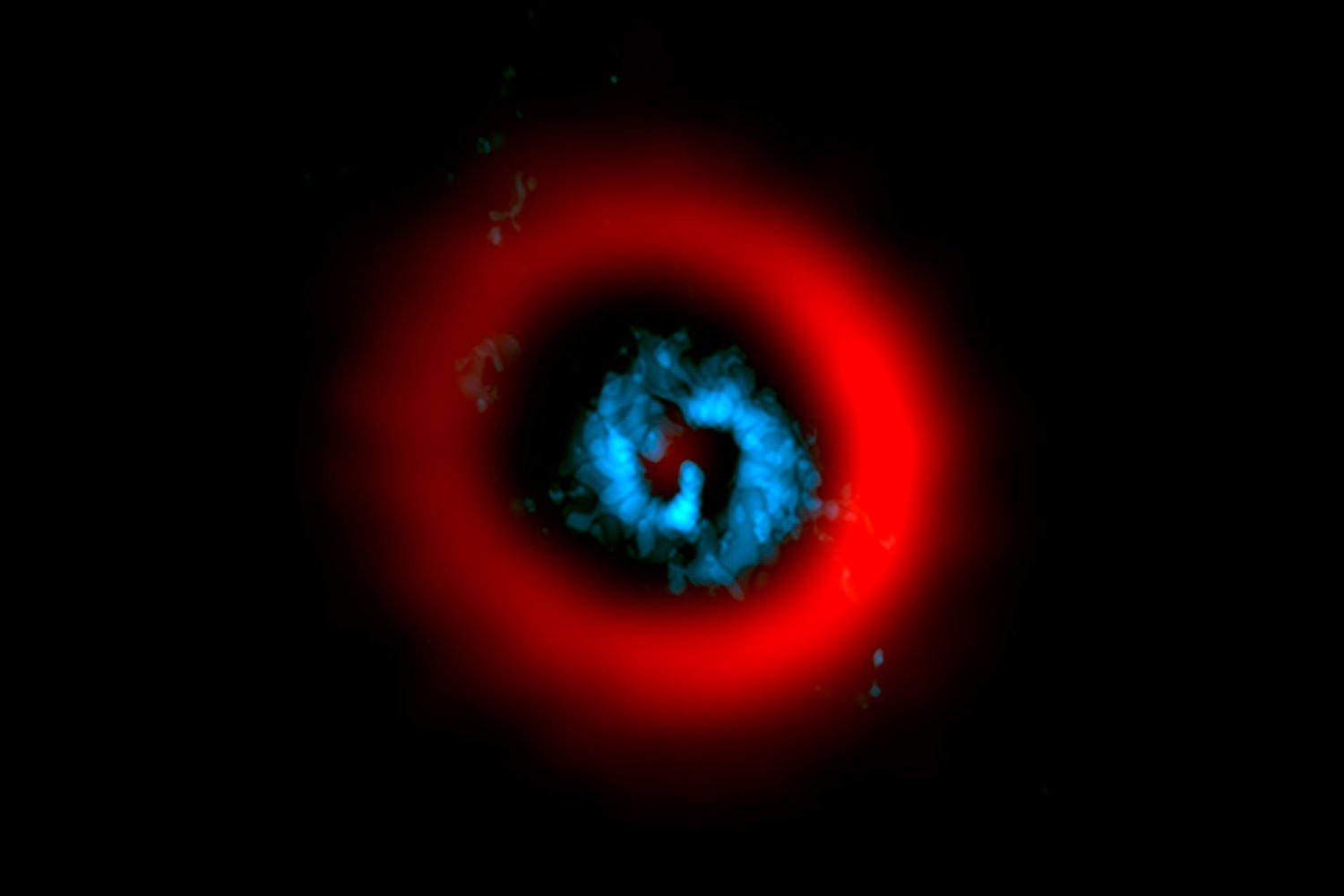Paige Colley | EAPS
2024-09-04 11:10:00
news.mit.edu

Exoplanets form in protoplanetary disks, a collection of space dust and gas orbiting a star. The leading theory of planetary formation, called core accretion, occurs when grains of dust in the disk collect and grow to form a planetary core, like a snowball rolling downhill. Once it has a strong enough gravitational pull, other material collapses around it to form the atmosphere.
A secondary theory of planetary formation is gravitational collapse. In this scenario, the disk itself becomes gravitationally unstable and collapses to form the planet, like snow being plowed into a pile. This process requires the disk to be massive, and until recently there were no known viable candidates to observe; previous research had detected the snow pile, but not what made it.
But in a new paper published today in Nature, MIT Kerr-McGee Career Development Professor Richard Teague and his colleagues report evidence that the movement of the gas surrounding the star AB Aurigae behaves as one would expect in a gravitationally unstable disk, matching numerical predictions. Their finding is akin to detecting the snowplow that made the pile. This indicates that gravitational collapse is a viable method of planetary formation. Here, Teague, who studies the formation of planetary systems in MIT’s Department of Earth, Atmospheric and Planetary Sciences (EAPS), answers a few questions about the new work.
Q: What made the AB Aurigae system a good candidate for observation?
A: There have been plenty of observations that have suggested some interesting dynamics going on the system. Groups have seen spiral arms within the disk; people have found hot spots, which some groups have interpreted as a planet; others have explained as some other instability. But it was really a disk that we knew there was lots of interesting motions going on. The data that we had previously was enough to see that it was interesting, but not really good enough to detail what was going on.
Q: What is gravitational instability when it comes to protoplanetary disks?
A: Gravitational instabilities are where the gravity from the disk itself is strong enough to perturb motions within the disk. Usually, we assume that the gravitational potential is dominated by the central star, which is the case when the mass of the disk is less than 10 percent of the stellar mass (which is most of the time). When the disk mass gets too large, gravitational potential will affect it in different ways and drive these very large spiral arms in the disk. These can have lots of different effects: They can trap the gas, they can heat it up, they can allow for angular momentum to be transported very rapidly within the disk. If its unstable, the disk can fragment and collapse directly to form a planet in an incredibly short period of time. Rather than the tens of thousands of years that it would take for a core accretion to happen, this would happen at a fraction of that time.
Q: How does this discovery challenge conventional wisdom around planetary formation?
A: It shows that this alternative path of forming planets via direct collapse is a way that we can form planets. This is particularly important because we’re finding more and more evidence of very large planets — say, Jupiter mass or larger — that are sitting very far away from their star. Those sorts of planets are incredibly hard to form with core accretion, because you typically need them close to the star where things happen quickly. So to form something so massive, so far away from the star is a real challenge. If we’re able to show that there are sources that are massive enough that they’re gravitationally unstable, this solves that problem. It’s a way that perhaps newer systems can be formed, because they’ve always been a bit of a challenge to understand how they came about with core accretion.
Support Techcratic
If you find value in Techcratic’s insights and articles, consider supporting us with Bitcoin. Your support helps me, as a solo operator, continue delivering high-quality content while managing all the technical aspects, from server maintenance to blog writing, future updates, and improvements. Support Innovation! Thank you.
Bitcoin Address:
bc1qlszw7elx2qahjwvaryh0tkgg8y68enw30gpvge
Please verify this address before sending funds.
Bitcoin QR Code
Simply scan the QR code below to support Techcratic.

Please read the Privacy and Security Disclaimer on how Techcratic handles your support.
Disclaimer: As an Amazon Associate, Techcratic may earn from qualifying purchases.



















































































![Conquest of Space / I Married a Monster from Outer Space [Blu-ray]](https://techcratic.com/wp-content/uploads/2025/09/81Yx1UahVuL._SL1500_-360x180.jpg)














